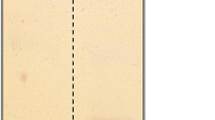Abstract
The immunotropic activity of structurally different fucoidans and their derivatives towards isolated immune blood cells, effectors of innate immune system, was studied. The most potent effect was observed for high molecular weight fucoidan CF from the alga Chordaria flagelliformis, whose backbone is built of (1→3)-linked units of α-L-fucopyranose, and branches included residues of α-D-glucuronic acid and α-L-fucofuranose. This compound at the concentration of 0.05 mg/ml potentiated phagocytosis of Saccharomyces cerevisiae and Lactobacillus acidophilus by neutrophils, increasing relative quantity of phagocytes as well as their effectiveness. Along with this, 14% increase in the concentration of membrane-bound integrin CD11c molecules was observed. The systemic effect of CF at the dose of 0.01 mg/mouse i.p. led to potentiation of cytotoxic activity of spleen mononuclear leucocytes towards melanoma cells of line B16 by 1.9-fold and towards chronic myelogenous leukemia cells of line K-562 by 1.7-fold. These results indicate that fucoidan CF can stimulate anti-infective and antitumor activity of effectors of the innate immune system via CD11c integrins.
Similar content being viewed by others
Abbreviations
- CF:
-
high molecular weight fucoidan from alga Chordaria flagelliformis
- DMSO:
-
dimethyl sulfoxide
- EC:
-
effector cells
- IC:
-
index of cytotoxicity
- MFI:
-
mean fluorescence intensity
- ML:
-
mononuclear leukocytes
- NBT:
-
nitroblue tetrazolium
- NK:
-
natural killer cells
- OS:
-
synthetic fully sulfated octasaccharide
- PI:
-
phagocytic index
- PN:
-
phagocytic number
- PPdX:
-
dexylosylated low molecular weight fucoidan from alga Punctaria plantaginea
- SL:
-
high molecular weight fucoidan from alga Saccharina latissima
- TC:
-
target cells
References
Fitton, J. H. (2011) Therapies from fucoidan; multifunctional marine polymers, Mar. Drugs, 9, 1731–1760.
Pomin, V. H. (2012) Fucanomics and galactanomics: current status in drug discovery, mechanisms of action and role of the well-defined structures, Biochim. Biopys. Acta, 1820, 1971–1979.
Jiao, G., Yu, G., Zhang, J., and Ewart, S. (2011) Chemical structures and bioactivities of sulfated polysaccharides from marine algae, Mar. Drugs, 9, 196–223.
Ale, M. T, Mikkelsen, J. D., and Meyer, A. S. (2011) Important determinants for fucoidan bioactivity: a critical review of structure-function relations and extraction methods for fucose-containing sulfated polysaccharides from brown seaweeds, Mar. Drugs, 9, 2106–2130.
Ananikov, V. P., Khokhlova, E. A., Egorov, M. P., Sakharov, A. M., Zlotin, S. G., Kucherov, A. V., Kustov, L. M., Gening, M. L., and Nifantiev, N. E. (2015) Organic and hybrid molecular systems, Mendeleev Commun., 25, 75–82.
Jin, J., and Yu, Q. (2015) Fucoidan delays apoptosis and induces pro-inflammatory cytokine production in human neutrophils, Int. J. Biol. Macromol., 73, 65–71.
Makarenkova, I. D., Logunov, D. Y., Tukhvatulin, A. I., Semenova, I. B., Zvyagintseva, T N., Gorbach, V. I., Ermakova, S. P., and Besednova, N. N. (2012) Sulfated polysaccharides of brown seaweeds are ligands of toll-like receptors, Biochem. Mosc. Suppl. Ser. B. Biomed. Chem., 6, 75–80.
Jin, J-O., Zhang, W., Du, J-Y, Wong, K-W., Oda, T, and Yu, Q. (2014) Fucoidan can function as an adjuvant in vivo to enhance dendritic cell maturation and function and promote antigen-specific T-cell immune responses, PLoS One, 9, e99396.
Cumashi, A., Ushakova, N. A., Preobrazhenskaya, M. E., D’Incecco, A., Piccoli, A., Totani, L., Tinari, N., Morozevich, G. E., Berman, A. E., Bilan, M. A., Usov, A. I., Ustuzhanina, N. E., Sanderson, C. J., Kelly, M., Rabinovich, G. A., Iacobelli, S., and Nifantiev, N. E. (2007) A comparative study of the antiinflammatory, anticoagulant, antiangiogenic and antiadhesive activities of nine different fucoidans from brown seaweeds, Glycobiology, 17, 541–552.
Ustyuzhanina, N. E., Ushakova, N. A., Zyuzina, K. A., Bilan, M. I., Elizarova, A. L., Somonova, O. V., Madzhuga, A. V., Krylov, V. B., Preobrazhenskaya, M. E., Usov, A. I., Kiselevskiy, M. V., and Nifantiev, N. E. (2013) Influence of fucoidans on hemostatic system, Mar. Drugs, 11, 24442458.
Ustyuzhanina, N. E., Bilan, M. I., Ushakova, N. A., Usov, A. I., Kiselevskiy, M. V., and Nifantiev, N. E. (2014) Fucoidans: pro- or antiangiogenic agents, Glycobiology, 24, 1265–1274.
Ustyuzhanina, N. E., Ushakova, N. A., Preobrazhenskaya, M. E., Bilan, M. I., Tsvetkova, E. A., Krylov, V. B., Anisimova, N. A., Kiselevskiy, M. V., Krukovskaya, N. V., Li, C., Yu, G., Saran, S., Saxena, R. K., Usov, A. I., and Nifantiev, N. E. (2014) Fucoidans as a platform for new anticoagulant drugs discovery, Pure Appl. Chem., 86, 13651375.
Bilan, M. I., Grachev, A. A., Shashkov, A. S., Kelly, M., Sanderson, C. J., Nifantiev, N. E., and Usov, A. I. (2010) Further studies on the composition and structure of a fucoidan preparation from the brown alga Saccharina latissima, Carbohydr. Res., 345, 2038–2047.
Bilan, M. I., Vinogradova, E. V., Tsvetkova, E. A., Grachev, A. A., Shashkov, A. S., Nifantiev, N. E., and Usov, A. I. (2008) A sulfated glucuronofucan containing both fucofuranose and fucopyranose residues from the brown alga Chordaria flagelliformis, Carbohydr. Res., 343, 2605–2612.
Bilan, M. I., Shashkov, A. S., and Usov, A. I. (2014) Structure of a sulfated xylofucan from the brown alga Punctaria plantaginea, Carbohydr. Res., 393, 1–8.
Krylov, V. B., Kaskova, Z. M., Vinnitskiy, D. Z., Ustyuzhanina, N. E., Grachev, A. A., Chizhov, A. O., and Nifantiev, N. E. (2011) Acid-promoted synthesis of per-Osulfated fucooligosaccharides related to fucoidan fragments, Carbohydr. Res., 346, 540–550.
Anisimova, N. Yu., Lebedinskaya, O. V., Karpenko, A. Yu., Kopylov, A. N., and Kiselevskiy, M. V. (2012) Estimation of activity ofblood neutrophils using bacteria and unicellular yeasts as phagocytosis objects, Vest. Ural. Med. Acad. Sci., 41, 12–13.
Karpishchenko, A. I. (ed.) (2002) Medical Laboratory Technologies. Guidebook [in Russian], Intermedika, St. Petersburg.
Shpakova, A. P., Pavlova, K. S., and Bulycheva, T I. (2000) MTT-colorimetric method for detection the cytotoxic activity of human natural killer cells, Klin. Lab. Diagn., 2, 20–23.
Mann, B. S., and Chung, K. F. (2006) Blood neutrophil activation markers in severe asthma: lack of inhibition by prednisolone therapy, Resp. Res., 7, 59.
Sadhu, C., Ting, H. J., Lipsky, B., Hensley, K., Garcia-Martinez, L. F., Simon, S. I., and Staunton, D. E. (2007) CD11c/CD18: novel ligands and a role in delayed-type hypersensitivity, J. Leukoc. Biol., 81, 1395–1403.
Anisimova, N. Yu., Pluzhnikova, N. A., Gromova, E. G., Kuznetsova, L. S., Tsvetkov, D. S., and Kiselevskiy, M. V. (2011) Receptor of apoptosis and adhesion molecules of leukocytes- promising sepsis markers in cancer patients, Russ. J. Immunol., 14, 262–265.
Anisimova, N. Yu., and Blokhin, N. N. (2014) Immunological Pathogenesis of Sepsis and Use of Hemosorption for Treatment of Cancer Patients with Sepsis, Nova Science Publishers Inc., N. Y.
Kumar, V., and Sharma, A. (2010) Neutrophils: Cinderella of innate immune system, Int. Immunopharmacol., 10, 1325–1334.
Thomas, S., and Balasubramanian, K. A. (2004) Role of intestine in postsurgical complications: involvement of free radicals, Free Radic. Biol. Med., 36, 745–756.
Author information
Authors and Affiliations
Corresponding authors
Additional information
To whom correspondence should be addressed.
Original Russian Text © N. Yu. Anisimova, N. E. Ustyuzhanina, F. V. Donenko, M. I. Bilan, N. A. Ushakova, A. I. Usov, N. E. Nifantiev, M. V. Kiselevskiy, 2015, published in Biokhimiya, 2015, Vol. 80, No. 7, pp. 1099-1108.
Rights and permissions
About this article
Cite this article
Anisimova, N.Y., Ustyuzhanina, N.E., Donenko, F.V. et al. Influence of fucoidans and their derivatives on antitumor and phagocytic activity of human blood leucocytes. Biochemistry Moscow 80, 925–933 (2015). https://doi.org/10.1134/S0006297915070111
Received:
Revised:
Published:
Issue Date:
DOI: https://doi.org/10.1134/S0006297915070111




